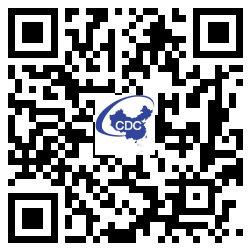版权所有:中国疾控中心慢病中心 版权与免责声明
 京公网安备 11010202010327号 京ICP备11024750号
京公网安备 11010202010327号 京ICP备11024750号
网站维护:中国疾控中心慢病中心 建议使用1024*768 分辨率,IE6.0以上浏览器
地址:北京市西城区南纬路27号 邮编:100050 电话:010-63038055
传真:010-63042350 邮箱:ncncdoffice@chinacdc.cn 访问量:

微信公众号

慢性病防控与健康公众号
2016年8月22日
大家好!
本周美国疾病预防控制中心?减盐电子周刊?内容包括:美国食品药品管理局(FDA)开放营养成分标签行业资源全新页面、华盛顿州克拉克县CDC社区减钠计划的成功经验、美国公共利益科学中心(CSPI)国际减钠措施最新动态及乔治全球健康研究院(The George Institute for Global Health)的印度高盐食品调研报告。
FDA提供可用信息以协助行业制定新营养成分标签
美国食品药物管理局(FDA)发布了专为营养成分标签开发的行业资源页面,帮助企业遵守2016年5月发布的最新营养成分标签规则。行业资源页面将提供以下几个方面的有用信息:
·常见问题(FAQ),特别是行业常见问题和普遍关注的问题
·为最常用标签格式提供新标签参数的注释图解
·以高分辨率图片形式展示最新标签格式范例
·最终规范确定的营养成分列表需列出维生素、矿物质和食物成分的每天摄入量建议值,同时还应列示单次食用参考值(RACCs)
·最终规范和参考资料链接
CDC社区减钠计划:华盛顿克拉克县的成功经验
自2012年起,克拉克县公共卫生部门(CCPH)就与本地独立餐厅所有人、厨师、厨艺总监及健康专业人员携手建立了“健康邻里餐厅计划”,旨在减少钠摄入量,降低餐食份量,打造健康的配餐方案和更健康的儿童餐食。克拉克县成功经验突出介绍了Mill Creek Pub在健康食品配方改进方面取得的成绩,他们主要对菜单上的14个菜品配方进行了改进,最终这些菜品中的钠含量平均降低了40%。此外,CCPH和Mill Creek Pub还通过降低餐食份量及烹饪更健康的配餐和儿童餐食降低菜单上其他30个菜品的钠含量。通常,餐厅每天的总消费人数有350位,其中有200位顾客选择购买低钠菜品。
CSPI国际减钠行动最新动态
美国公共利益科学中心(CSPI)公布了最新的国际减钠行动简报版本。这份报告主要介绍了正在 全球范围内开展的减钠行动,其中包括政府强制性实施及由政府牵头本着自愿原则实施的减钠计划。
阅读全文。
印度的高盐食品
乔治全球健康研究院、公众健康基金(Public Health Foundation)和慢性疾病控制中心联合发表了一份报告,强调指出印度在售包装食品的钠含量偏高。这份报告主要对可能造成印度膳食高盐的九类主要食品进行了分析。在这九类食品中,他们发现部分产品的盐含量非常高,并且达到英国2017年减盐目标的产品不足四分之一。此外,四分之一的产品包装上没有贴示营养成分,而包装上贴示了营养成分的产品中有三分之二没有列示钠含量。为了帮助印度人民选择更健康的包装食品,乔治全球健康研究院专门开发了一个移动应用程序FoodSwitch,用它可以扫描所有包装食品的条形码,然后根据食品中钠、脂肪或糖的含量显示不同的颜色编码标签。
阅读全文。
感谢您一直参与减钠活动。
请注意:
本简讯英文版由美国疾病预防控制中心发布,中文版由骄阳翻译公司翻译,如有歧义,请以英文版本为准。
(该信息为与减钠的相关伙伴机构和个人分享将正在进行的减钠活动信息。目的是为相关同仁提供持续更新的信息,并为对减钠工作感兴趣或致力于减钠工作的个人或机构创建一个合作网络。《减盐电子周刊》将每两周发布一期,如果你知道一些应该添加进来的人,或者你希望被从该通信人中删除,请联系蔡颖女士(caiy@cn.cdc.gov))。
《减盐电子周刊》在内容上只基于新闻价值和读者的潜在兴趣进行选择。美国疾病预防控制中心对所提供文章的真实准确性不承担任何责任。文章的选择、省略或文章内容并不意味着美国疾病预防控制中心对其内容有支持或其它观点。《减盐电子周刊》中原作者的观点或者引用,完全是其个人观点,绝不代表美国疾病预防控制中心的官方立场。所提及的产品、商业名称、出版物、新闻来源以及网站等,仅作参考之用,并不意味着美国疾病预防控制中心的认可。
Hello –
This week’s CDC Salt e-Update includes FDA’s new nutrition facts label Industry Resources webpage, a CDC Sodium Reduction in Communities Program success story in Clark Country, Washington, CSPI’s International Action on Sodium factsheet, and The George Institute for Global Health’s report on foods high in salt in India.
FDA Provides Information to Assist Industry with New Nutrition Facts Label
The U.S. Food and Drug Administration (FDA) has published a Nutrition Facts label Industry Resources page to help businesses comply with the final nutrition facts labeling rules that were issued in May 2016. The Industry Resources page provides helpful information including:
·Frequently Asked Questions specifically focused on industry’s common questions and concerns
·Annotated graphic illustrations of new label specifications for the most commonly used label formats
·High-resolution examples of label formats
·Tables from the final rules showing daily values for vitamins, minerals, and food components, as well as reference amounts customarily consumed per eating occasion (RACCs)
·Links to final rules and reference materials
CDC’s Sodium Reduction in Communities Program: Clark County, Washington Success Story
Clark County Public Health (CCPH) has collaborated with local independent restaurant owners, chefs, culinary instructors, and health professionals since 2012 to create the Healthy Neighborhood Restaurant Program with the aim of decreasing sodium, reducing portion sizes, creating healthy side options, and healthier kids’ meals. The success story highlights the progress made by Mill Creek Pub who’s recipe modifications affected 14 menu items, resulting in an average sodium reduction of 40% in those recipes. CCPH and Mill Creek Pub reduced sodium in an additional 30 menu options by reducing portion sizes and offering healthier sides and kids’ menus. On average, 200 of the restaurant’s 350 daily customers purchased lower sodium menu options.
CSPI International Action on Sodium Factsheet
The Center for Science in the Public Interest (CSPI) released an updated version of its International Action on Sodium fact sheet. The fact sheet covers sodium reduction initiatives going on all over the world, including both government-mandated and government-led voluntary programs.
Foods High in Salt in India
A report has been published by The George Institute for Global Health, Public Health Foundation and Centre for Chronic Disease Control highlighting the high levels of sodium in packaged foods sold in India. The report focused on nine food categories which were likely to contribute high amounts of salt in the Indian diet. Of those they found some products contained excessively high levels of salt and less than a quarter of the products met the UK 2017 salt reduction targets. Additionally, a quarter of the products did not have any nutrition information on the package, and of those that did have nutrition information on the package, two thirds did not list sodium. To help Indians make healthier packaged food choices, The George Institute India has launched, FoodSwitch, a mobile app that can be used to scan the barcode of any packaged food product and display a color coded label depending on the amount of sodium, fat or sugar in the product.
Thank you for your continued engagement in sodium reduction.
We are sending this information in an effort to inform our stakeholders of relevant sodium reduction efforts that are occurring. The purpose of this communication is to provide continued follow up with stakeholders and create a network of partners working on and interested in sodium reduction. The Salt e-Update will be sent every two weeks. For questions or comments, or to be added or removed from this communication, contact Hadley Hickner (xxm5@cdc.gov)
Salt e-Update content is selected solely on the basis of newsworthiness and potential interest to readers. CDC assumes no responsibility for the factual accuracy of the items presented. The selection, omission, or content of items does not imply any endorsement or other position taken by CDC. Opinions expressed by the original authors of items included in Salt e-Update, or persons quoted therein, are strictly their own and are in no way meant to represent the official position of CDC. References to products, trade names, publications, news sources, and Websites are provided solely for informational purposes and do not imply endorsement by the CDC.
附件: